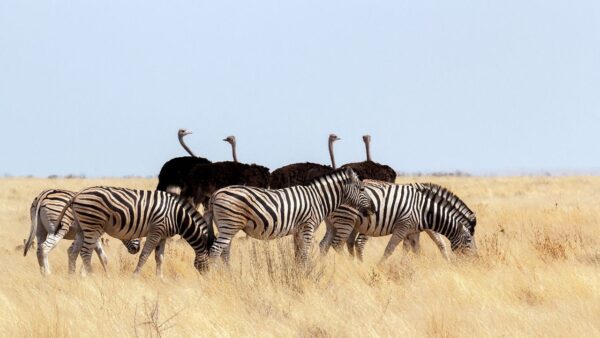Celebrate Valentine’s Day with nature’s own love stories – from plants and bacteria to crocodiles and birds, showcasing unique interspecies relationships.
In nature, bats and carnivorous plants, along with crocodiles and birds, show amazing partnerships where they rely on each other for survival.
Oh, look at the Everglades, hosting a glamorous party featuring green-brown spongy sludge – the epitome of elegance, sophistication, and perhaps the latest trend in marsh fashion. It’s not your typical algal bloom that steals oxygen and wreaks havoc; no, it’s the fabulous periphyton, a gathering of algae, fungi, and other less glamorous attendees like plant detritus, microbes, and bacteria. Move over red carpet, we’ve got a marsh carpet covered in slime, darling.

Now, let’s talk about mutualism – nature’s version of a dating app for species. The Everglades’ periphyton, with its slimy mingling of algae and fungi, is like the power couple that has lasted for “probably hundreds of millions of years.” Move aside, Hollywood romances; this is the true love story of the marshes. And as Valentine’s Day rolls around, we delve into some other nature love stories, like the thrilling tale of the Borneo-based beauty, the carnivorous pitcher plant, and its swoon-worthy partner, the woolly bat. Who knew sticky slime and bat droppings could make such a heartwarming duo?
But wait, there’s more! Clover roots and sugar-munching bacteria engage in a love affair that has stood the test of 60 million years. Talk about commitment! And crocodiles and birds – an alliance documented since ancient times, or so they say. It’s like the rom-com of the animal kingdom, filled with tooth-cleaning plovers, alligators offering protection, and a tasty feast provided by falling chicks. Nature truly knows how to spin a riveting narrative of love, sacrifice, and survival. So, as we ponder the intricacies of these heartwarming tales, remember, it’s not all doom-and-gloom – nature, the eternal romantic, always finds a way to adapt to global change. Cheers to love in the wild!